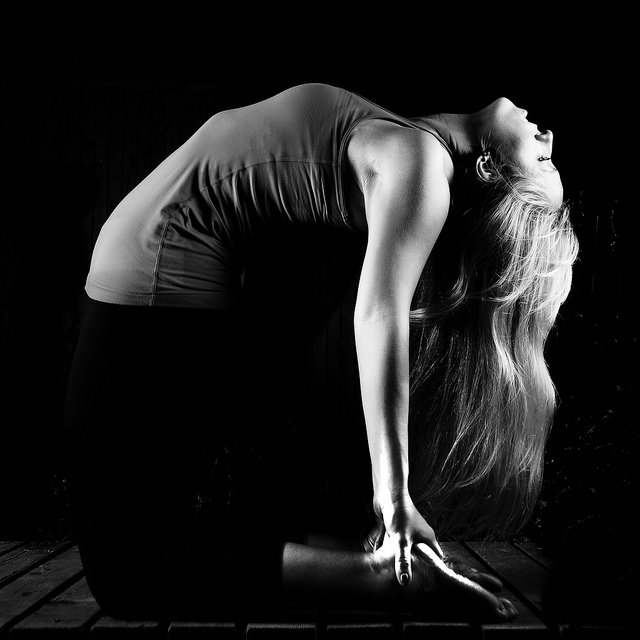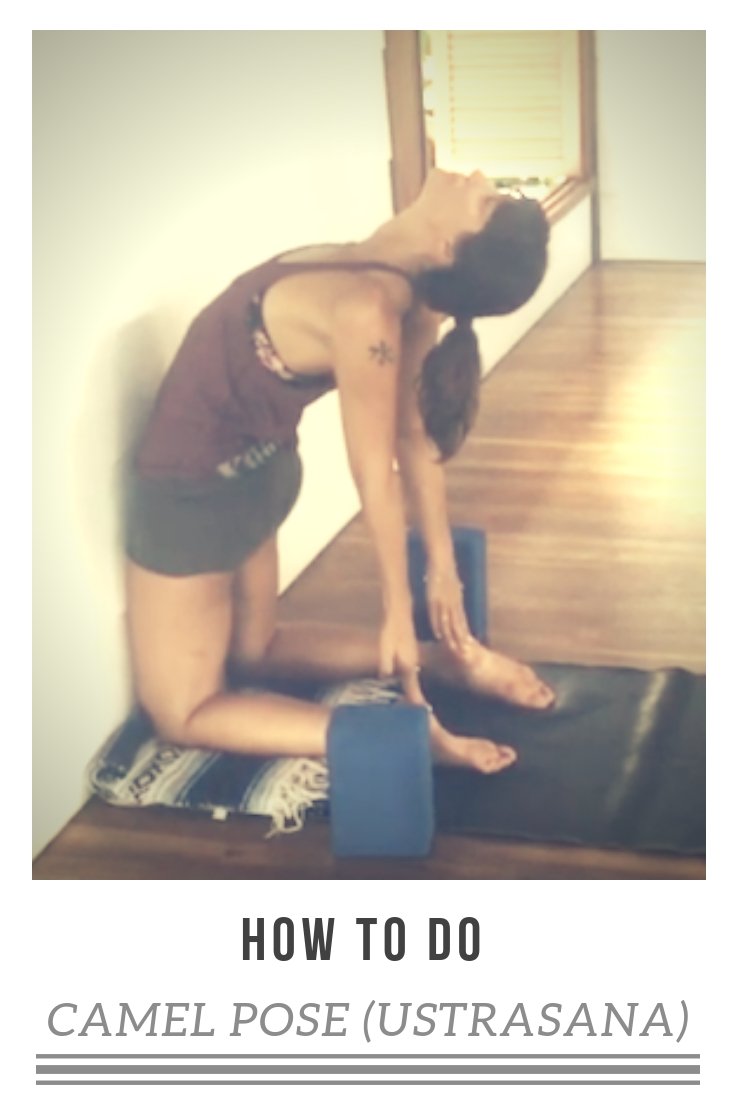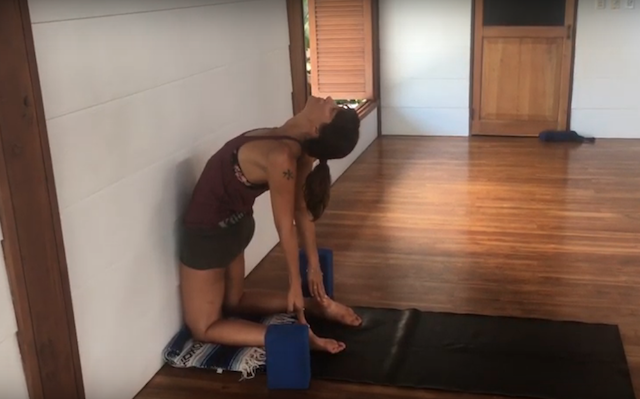A somewhat challenging, yet extremely rewarding pose is Camel Pose or Ustrasana. A great backbend pose, Camel Pose requires a bit of stamina and endurance as it opens your shoulders and chest, while also strengthening your back. The pose is perfect for those looking to stretch the entire front of the body as well as great preparation for performing future deeper backbends.
While the pose may put you in a vulnerable position, it is a yoga pose you should definitely learn how to practice so you can experience first hand all the many benefits it can offer. Not only can Camel Pose relieve neck and back pain, it has a range of other great physical benefits as well as positive mental side effects such as decreasing stress and boosting the inner spirit.

Photo by ann harkness
Benefits of Camel Pose (Ustrasana)
Physical Benefits
Backbends such as Camel Pose can be as beneficial as they are demanding. Camel Pose’s numerous physical benefits begin with increasing spinal flexibility as it restores its natural mobility by being bent in the opposite direction it is placed in most of the day. You’ll begin to also notice a strengthening of your back muscles which can lead to better posture. The pose brings further benefits in the form of opening your shoulders and chest, making it easier to breathe, and can improve circulation as well as digestion over time by stimulating the kidneys. The pose is also a great way to stretch your quadriceps, neck, groin, and glutes.
Internal Benefits
Camel Pose is great for energizing the body which can result in a decrease in stress, anxiety, and feeling fatigued. For many, Camel Pose has the ability to increase your creativity along with allowing you to better recognize and control your emotions. In addition to the pose opening your chest and shoulders, it also opens your mind by releasing tension in the area. This revitalizing of the brain leads to a greater ability to concentrate.
How to Practice Camel Pose (Ustrasana)
Step 1
Camel Pose begins by kneeling upright on the floor with your knees and legs hip-width apart. Your thighs should be perpendicular to the floor. You can rest the palms of your hands on your lower back around the sacrum region, the triangular bone situated between the two hip bones of the pelvis. Fingers should be pointed down.
Step 2
Next you will bring your tailbone toward your knees and lengthen your spine as you inhale. Lengthen the spine by pressing your knees into the floor and reaching your head upwards. Lift your chest and sternum as you draw your elbows in towards each other. Widen the back of your pelvis and make sure to keep your hips directly over your knees as you rotate your thighs inwards.
Step 3
Your weight should be supported by your arms as you begin to bend backward. Expand your ribcage and keep your chin slightly tucked toward your chest as you lean back. Your hands should still be on your lower back. Try to keep your chest raised and core engaged.
Step 4
Deepen the pose by reaching back to grab hold of your heels. Keep your thumbs holding the outside of each foot as you pull your heels and lift your chest higher. Tuck your toes to elevate your heels as you keep your thighs perpendicular to the floor. Press the hips forward, lifting the chest up towards the ceiling, and gently lower your head and neck so your gaze is now behind you. You can focus on the tip of your nose. Breathing and swallowing should still feel comfortable.
Step 5
After you have held the pose for 3-6 breaths, come out of the pose by bringing your hands to your lower back once again. Make sure to relocate your hands one at a time. As you begin to slowly come back up vertically, support your lower back with your hands as you engage your stomach muscles. Your head and neck should be last to come back vertical as you bring your chin back towards your chest. You can rest in the Child’s Pose or Corpse Pose, but it is advised you neutralize and lengthen your spine by first performing a Downward Dog Pose.
[et_bloom_inline optin_id=”optin_16″]
Modifications for Camel Pose (Ustrasana)
Camel Pose is a pose which should not be forced, as doing so can result in injury. You should practice a modified variation first if you are not comfortable or capable to perform the standard Camel Pose. There are several modifications that you can start with to gain the strength and flexibility needed for the traditional Camel Pose.
If you are having trouble reaching your heels, you can keep your hands on your lower back or back of your thighs. Alternatively, you can try placing blocks on the outside of each foot for your hands to rest on. Those looking for a bit more of a challenge can deepen the pose by squeezing a block between their thighs while performing the pose. Other challenges to try as you master the pose would be to press your thighs and calves together throughout the pose or grab hold of the opposite ankles. For a much deeper backbend, attempt to slide your hands towards knees as you lower your head to the floor.
Tips and Common Mistakes with Camel Pose (Ustrasana)
Be sure to take the pose slowly at first and only go as far back as you feel comfortable with. It can be easy to strain the neck while practicing this pose, so you want to keep your neck extended in a relaxed pose without tensing the muscles. Be sure to keep your knees no wider than your hips and keep your hips over your knees. You may wish to practice Sphinx Pose if you are experiencing a lower back injury.
Pin It For Later!

About the author:

Casey Siemasko is a content marketing consultant, travel blogger, and wandering yogi. An entrepreneur at heart, she is the co-founder of the award-winning travel blog A Cruising Couple. Besides yoga and travel, she enjoys wine tastings, being outdoors and taking on new hobbies. Follow Casey on LinkedIn and Google+.
Follow Casey:







